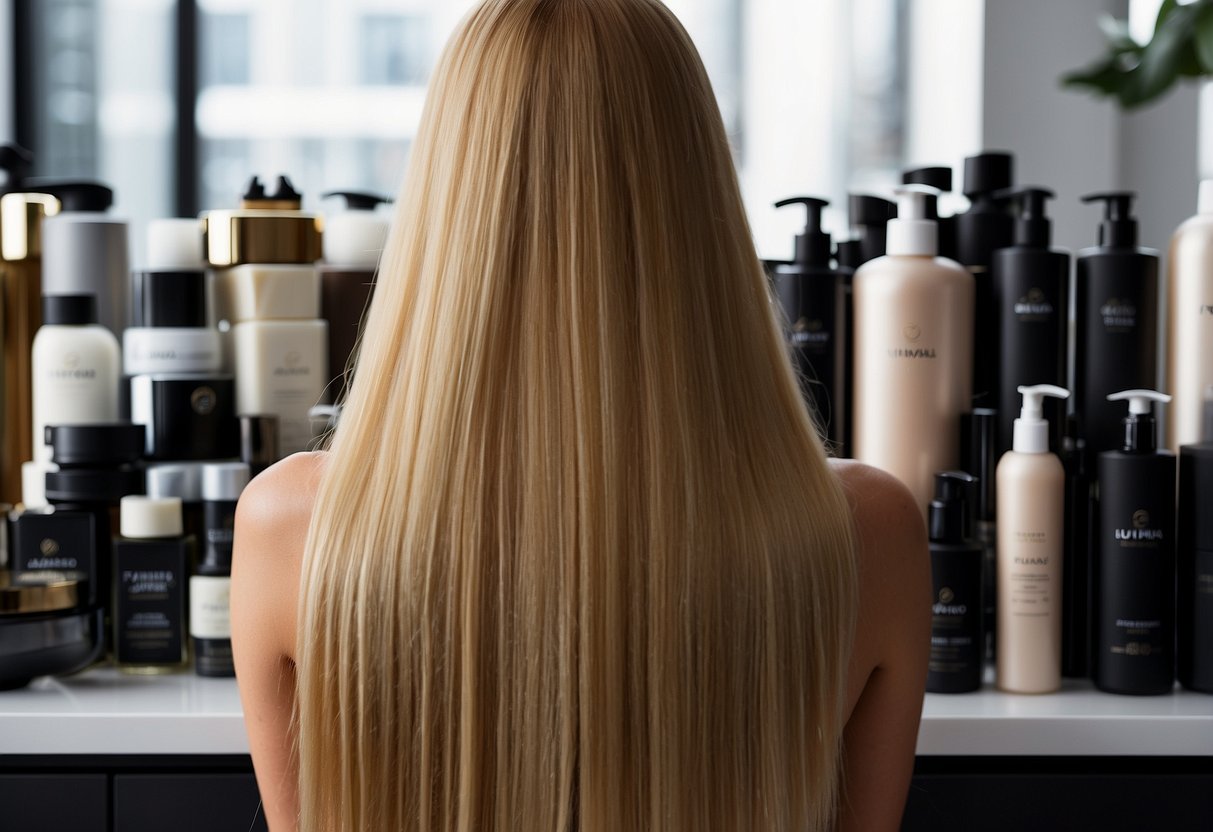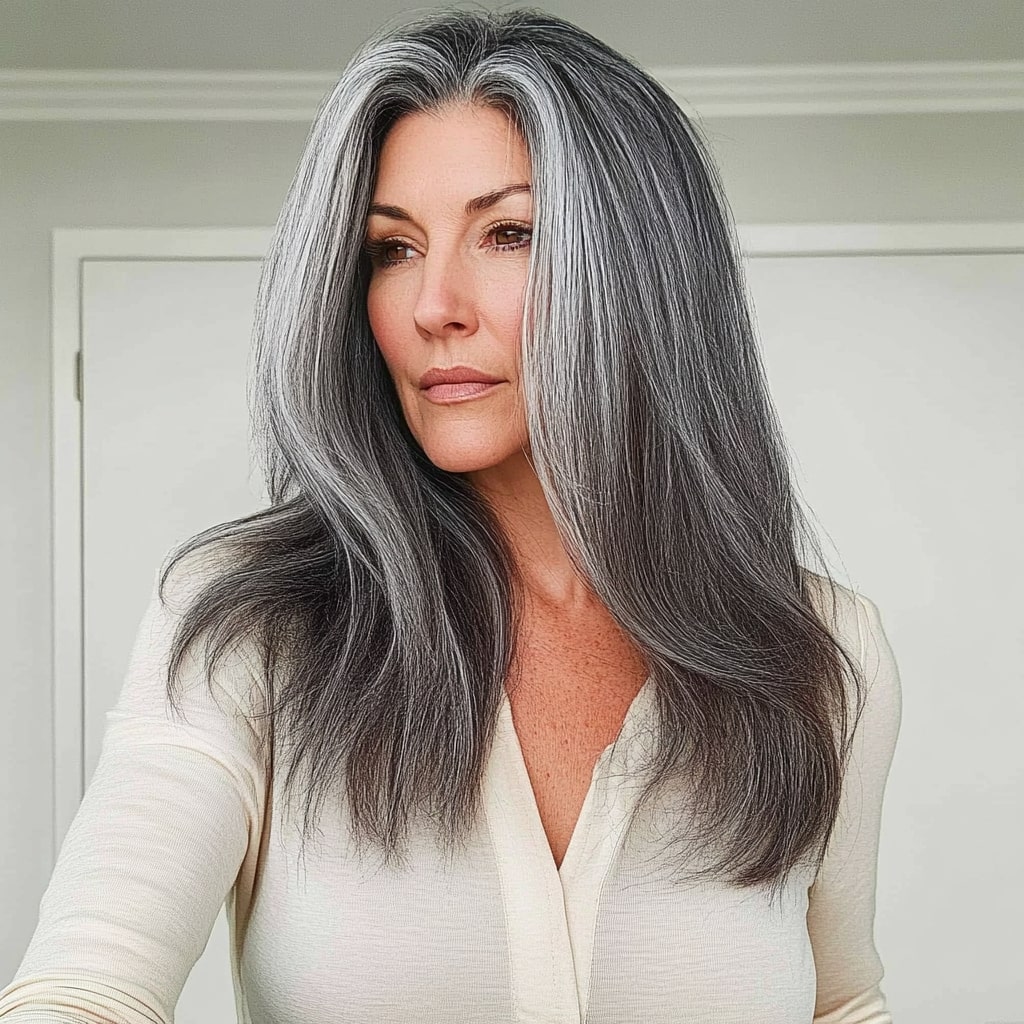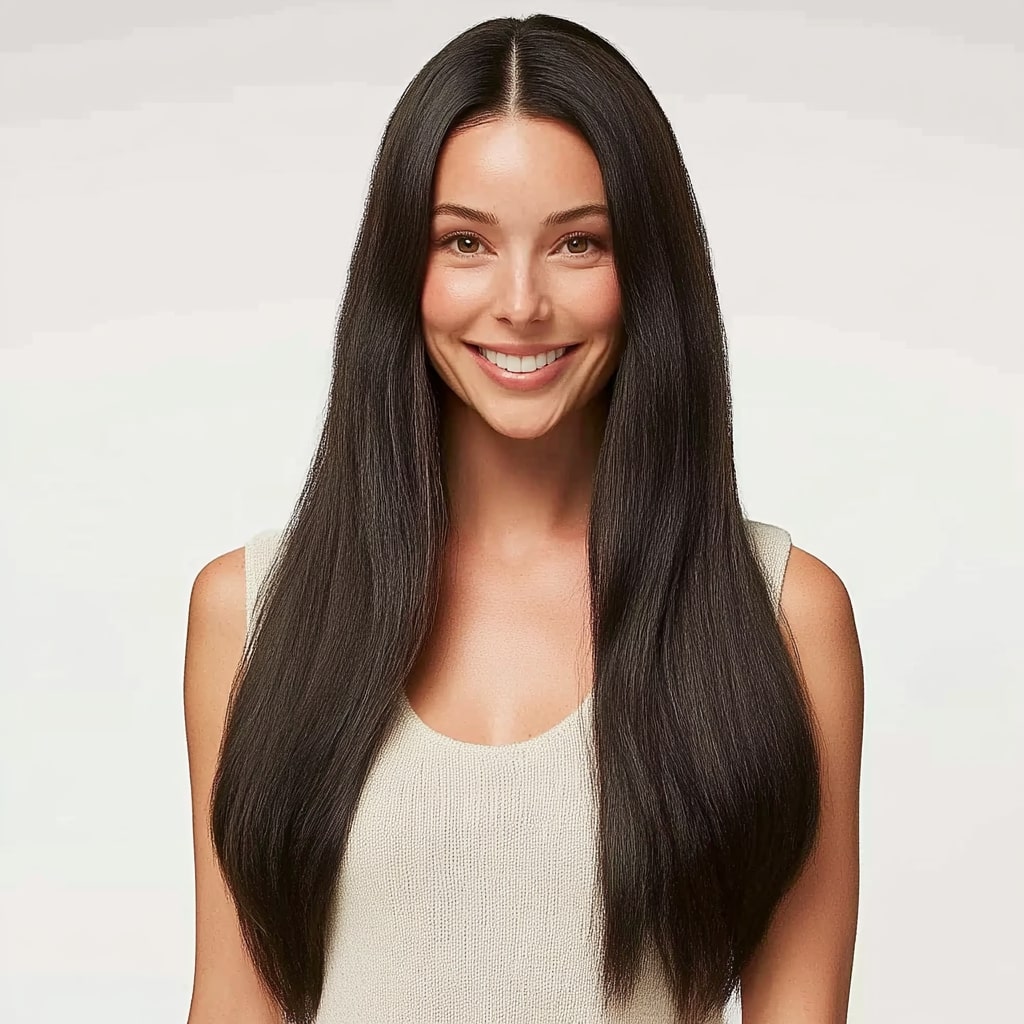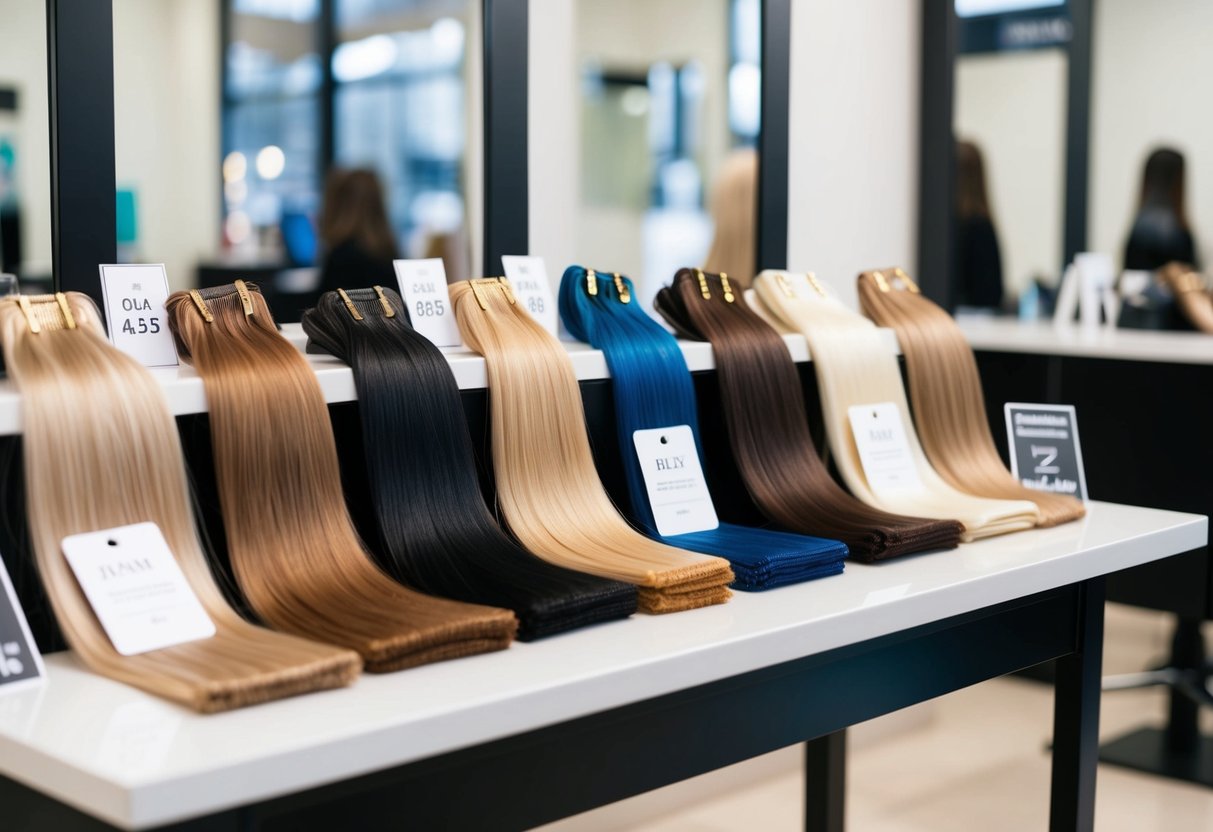Dealing with Sticky Tape-In Extensions: Causes and Solutions

Are you frustrated with your tape-in hair extensions becoming sticky? This common issue can happen due to several factors, such as the quality of tape used or the way you're maintaining them. Sticky tape-in extensions are often the result of oil buildup, improper care, or using low-quality tape.
When oils from shampoos, conditioners, or styling products come in contact with the adhesive, they can cause the tapes to lose their stickiness and become difficult to manage. Also, if water or sweat gets trapped in the tapes, it can lead to stickiness and potential slipping of extensions.
Fortunately, understanding and addressing these causes can help you maintain your extensions better. From choosing high-quality tapes to adopting the right care techniques, there are several steps you can take to prevent and fix this inconvenience.
Key Takeaways
- Sticky extensions are usually caused by oil and water exposure.
- High-quality tape and proper maintenance are essential.
- Addressing these issues can help you maintain better extensions.
Understanding Tape-In Extensions
Tape-in extensions are a popular choice for enhancing the length and volume of your hair. They are known for their discreet application and long-lasting results.
Defining Tape-In Extensions
Tape-in extensions are hair extensions that attach to your natural hair using a type of medical-grade adhesive. These extensions come in small sections, typically 1 to 1.5 inches wide. The adhesive used is strong and designed to hold the extensions securely in place without causing damage to your natural hair.
Applying tape-in extensions involves sandwiching your natural hair between two sections of the extension, creating a flat and seamless appearance. This method ensures that the extensions blend naturally and move with your hair.
Benefits of Choosing Tape-In Extensions
One major benefit of tape-in extensions is the natural look they provide. Because the adhesive bonds are thin and lie flat against the scalp, they are virtually undetectable when applied correctly.
Key Benefits:
- Natural Appearance: Offers a seamless blend with your natural hair.
- Durable: Can last for several weeks with proper maintenance.
- Comfortable: Lightweight and not bulky, making them comfortable to wear.
Another advantage is the ease of maintenance. Tape-in extensions are easy to care for and can be styled like your natural hair. This flexibility makes them a great choice for those who want to maintain their usual styling routine.
Components of Tape-In Extensions
The main components of tape-in extensions include the hair itself and the adhesive tape. The quality of these components plays a significant role in the longevity and appearance of the extensions.
Hair Quality:
- Human Hair: Often preferred for its natural look and feel.
- Synthetic Hair: More affordable but may not blend as well.
Adhesive Tape:
- Medical-Grade Adhesive: Ensures a strong bond without damaging natural hair.
- High-Quality Tape: Prevents slippage and maintains the position of the extensions.
Investing in high-quality tape and hair is essential for the best results. Cheap materials can lead to issues like sticky residue or extensions that do not stay in place. Make sure to replace the tape every 6 to 8 weeks to ensure the integrity of the bond.
Proper Application Techniques
Proper application techniques ensure that your tape-in extensions stay secure and look natural. These techniques involve careful preparation, accurate sectioning, and proper placement. Additionally, troubleshooting common errors can help achieve the best results.
Preparation of Natural Hair
To begin, ensure your natural hair is clean and dry. Shampoo and condition using products free of oils and silicones, as these can prevent tape adhesives from sticking. Avoid using heavy products that leave residue.
Once washed, thoroughly dry your hair. Using a clarifying shampoo can help remove any leftover buildup. Brush your hair well to remove any tangles or knots, as this will make the application process smoother and more efficient.
Sectioning and Placement
Divide your hair into small, manageable sections. Use clips to hold each section away from the area you're working on. This step is crucial for accurate placement. Start at the nape of the neck and work your way up.
When placing the extensions, ensure they are about ¼ to ½ inch away from the scalp. This distance prevents tension on your natural hair. The extensions should be sandwiched between thin slices of your own hair. This method helps create a seamless, natural look.
Securing the Bonds
Press firmly on each tape-in extension to secure the bonds. Use a flat iron on a low heat setting to seal the adhesive, as some tapes are heat-activated for extra security. Be consistent with the pressure to ensure even bonding.
Avoid touching the adhesive with your fingers, as oils from your skin can interfere with the adhesive quality. Always follow manufacturer guidelines regarding the amount of pressure and heat to apply.
Troubleshooting Common Application Errors
Sometimes extensions may slip or not stick properly. This can be due to improper cleaning of the natural hair before application or using the wrong type of tape for your hair type. Always review your preparation steps if issues arise.
Check that you are sectioning correctly and maintaining a consistent distance from the scalp. If extensions are placed too close, they can cause pulling and damage. Ensuring correct placement can prevent such issues and prolong the life of your extensions.
Maintenance of Tape-In Extensions
Proper maintenance of tape-in extensions involves daily care, mindful washing, and troubleshooting common issues like slipping or stickiness. This ensures your extensions remain secure and look their best.
Daily Care Tips
Brush your tape-in extensions gently at least twice a day, using a soft-bristle brush. Start from the ends and work your way up to avoid pulling on the tapes.
Avoid using heavy styling products close to the tapes, as they can cause build-up and weaken the adhesive. Light serums and leave-in conditioners can be used to keep the extensions smooth and frizz-free, but apply them sparingly.
When sleeping, tie your hair in a loose braid or ponytail to prevent tangling. Consider using a silk pillowcase to reduce friction.
Washing and Conditioning
Wash your hair with sulfate-free shampoos, as sulfates can strip the adhesive. Apply shampoo to your roots and gently massage, being careful not to tug at the tapes. Rinse thoroughly with lukewarm water.
Use a lightweight conditioner from mid-length to ends, avoiding the tape area to maintain adhesion. A deep conditioning treatment can be used once a week, but again, avoid the tapes.
Pat your hair dry with a towel instead of rubbing it, which can cause frizz and disrupt the tapes. Allow your hair to air dry or use a blow dryer on a low heat setting, keeping the dryer at a distance to avoid overheating the adhesive.
Dealing with Slipping or Stickiness Issues
If your extensions slip or feel sticky, several factors could be at play. Low-quality tape often leads to poor adhesion. Always use professional-grade tapes specifically designed for hair extensions.
Before application, ensure your hair is clean and free of oils or residues. Any leftover product can interfere with the adhesive bond, causing the tapes to slip.
If your extensions become sticky after some weeks, it may be time for retaping. Remove the old tape, clean the extension, and apply new adhesive. Regular follow-up with your stylist can help address any issues promptly.
Hair and Scalp Health
Proper care of hair and scalp is crucial when using tape-in extensions. Understanding the effects on your scalp and natural hair can help you minimize any potential damage.
Effects of Tape-In Extensions on Scalp
Tape-in extensions can impact your scalp's health if not managed well. These extensions attach close to the scalp, which may lead to irritation. Frequent use of strong adhesives can exacerbate this issue.
You may notice sensitivities due to the weight of the extensions, causing strain on your scalp. This can lead to discomfort or even mild pain. Moreover, improper removal can damage the scalp's surface, causing abrasions.
Maintaining a clean scalp is essential. Regular cleansing helps prevent buildup of oils, which can make the tapes sticky. This buildup can block hair follicles, potentially leading to scalp issues such as itching and dandruff.
Preventing Damage to Natural Hair
To protect your natural hair, choose high-quality extensions and adhesive tapes. Low-quality materials can lead to breakage and loosening of your extensions, causing unnecessary stress on your hair.
Before applying extensions, ensure your hair is free from oils and residues. Excess oils can weaken the adhesive bond, making the extensions more likely to slip and become sticky.
Regular maintenance and gentle handling are crucial. Avoid harsh brushing or pulling at the extensions, as this can lead to hair loss or breakage. Stick to a routine hair care regimen, including gentle shampooing and conditioning, to keep both your extensions and natural hair in good condition.
Remember, your natural hair needs to breathe and grow, so avoid prolonged use of extensions without giving your hair a break.
Removing Tape-In Extensions
Proper removal of tape-in extensions is crucial to avoid hair damage and ensure the longevity of your extensions. Below are detailed steps and advice on when to remove them, how to do it safely, and the importance of aftercare.
When to Remove Tape-In Extensions
You should remove your tape-in extensions every 6-8 weeks. This timing prevents potential damage from overgrown sections and ensures proper hair and scalp health. Extensions that have been in too long might start slipping or cause discomfort.
Be sure to watch for signs like significant adhesive breakdown, discomfort, or gaps where the tape has loosened. If you notice any of these, it is time to remove your extensions.
Steps for Safe Removal of Tape-Ins
Safe removal involves a few key steps. Start by gathering the necessary tools: adhesive remover, fine-tooth comb, and alcohol-based solutions to dissolve the tape's adhesive.
- Apply the adhesive remover directly on the tape tabs.
- Wait a few minutes for the solution to break down the adhesive.
- Gently comb through the extensions to pull them apart. Avoid tugging to prevent damage.
If you find the process too challenging, seeking a professional's help ensures a safer removal.
Aftercare Following Removal
Aftercare is just as important as the removal process. Cleanse your hair thoroughly to eliminate any remaining adhesive residue. Use a mild clarifying shampoo followed by a deep conditioning treatment to restore moisture.
Avoid harsh chemicals or heat styling for a few days to let your hair recover. This period allows your natural hair to regain strength before reapplying extensions or considering another treatment.
Giving your hair a break and proper aftercare helps maintain a healthy scalp and strong hair, ready for future extensions or styles.
Prevention and Solutions
To prevent sticky tape-in extensions, it's crucial to understand what causes them and how to address these issues effectively. Cleanliness and choice of products play a significant role.
Avoiding Sticky Situations
Avoid Oils and Product Buildup: One major cause of sticky tape-in extensions is the buildup of oils and hair products. Oils from your scalp or hair products can weaken the adhesive on the tapes, causing them to become sticky.
Use a Cleansing Shampoo: Regularly cleansing your hair with a sulfate-free shampoo will help remove buildup without damaging the extensions. Sulfate-free options are gentle and less likely to strip essential oils from your natural hair or tapes.
Dry Hair Thoroughly: Moisture weakens the adhesive. After washing, make sure to dry your hair thoroughly before attempting to style or touch the tape sections. A blowdryer can help, but keep it at a safe distance to avoid heat damage.
Quick Fixes for Sticky Tape-Ins
Replace the Tape: If your extensions are sticky, you may need to replace the tape. High-quality replacement tape made specifically for extensions ensures a strong bond. Replacing the tape every 6 to 8 weeks helps maintain the integrity of the extension bond.
Clean the Tape Areas: Cleaning the area where the tapes adhere is crucial. Use a non-oily removal solution to gently clean any residue without affecting your natural hair. This ensures the new tape will stick properly.
Avoid Heat and Moisture: Avoid exposing tape-in extensions to excessive heat and moisture. This includes hot showers, saunas, and intense workouts. Keeping the extensions dry and cool helps maintain the adhesive strength.
Visit a Professional: If at-home fixes don't work, consider visiting a professional stylist. They can provide specialized care and ensure your tape-in extensions are applied and maintained correctly.
Choosing the Right Products
Picking the right products for your tape-in extensions ensures they stay secure and your hair remains healthy. Specific agents and product types are essential in maintaining the adhesive bond and preventing stickiness.
Selecting the Correct Cleansing Agents
Cleansing shampoo: Use a cleansing shampoo designed to remove buildup. It helps keep your extensions clean without damaging the adhesive.
Sulfate-free shampoo: Opt for sulfate-free shampoos, as sulfates can weaken the tape adhesive. They cleanse without stripping natural oils or leaving residue.
Conditioners should be lightweight and applied mainly to the ends of your hair. Heavy conditioners can make the tape-ins slip or become sticky.
Remember to wash your hair gently and avoid scrubbing the tape areas directly.
Products to Avoid with Tape-Ins
Alcohol-based products: Keep away from products containing alcohol, as they can dissolve the adhesive and cause extensions to fall out.
Oils are another major cause of adhesive breakdown. Avoid applying oils directly to the tape-in area.
Styling products that are sticky or heavy should be used sparingly. They can create buildup that makes your extensions tacky and difficult to manage.
Regularly inspect ingredient labels to ensure you aren't using anything that could compromise your tape-ins.
Consulting a Professional
When you notice that your tape-in extensions are sticky, seeking the advice of a professional can provide valuable guidance. A licensed hair stylist can inspect your extensions and determine why they are sticky. They can spot issues that may not be obvious to someone without professional experience.
Visiting a salon is beneficial because professionals use high-quality products and techniques. They know the best practices for application and removal of tape-in extensions, which can help in fixing the stickiness issue effectively. Sometimes, incorrect application or low-quality tape are behind the problem.
If your extensions are falling out, a professional can recommend the right tape designed specifically for hair extensions. Maintaining your extensions by regular salon visits ensures they are kept in optimal condition, free from residue and stickiness.
A hair stylist can also provide a thorough cleaning routine for both your natural hair and extensions. Using appropriate products and avoiding common mistakes can prevent sticky buildup in the future. For complex concerns, your stylist might even suggest a different type of extension that better suits your hair type and lifestyle.
In summary, consulting a professional not only helps in addressing and fixing the stickiness but also extends the life of your tape-in extensions and ensures a seamless, natural look.
Frequently Asked Questions
Why are my tape-in extensions sticky?
Your tape-in extensions could be sticky due to product buildup or improper cleaning. Residue from shampoos, conditioners, or styling products might accumulate. Always ensure you use products designed for tape-in extensions.
How can I remove sticky tape-in extensions without damaging my hair?
To remove sticky tape-in extensions safely, use a specialized tape-in extension remover. Apply the remover to the adhesive area and wait a few minutes to let it loosen. Gently peel the tape away from your hair.
How often should I replace the tape on my extensions?
Typically, you should replace the tape every 6 to 8 weeks. This timing can vary based on how fast your natural hair grows and how well the tape bonds hold up.
What steps can be taken to ensure tape-in extensions stick better?
Use high-quality tape designed for tape-in extensions. Ensure your hair is clean and free from oils or conditioners before applying the tape. Press and hold the tape firmly for at least 10 seconds to secure a strong bond.
Are tape-in extensions bad for my hair?
No, tape-in extensions are generally safe if applied and maintained correctly. Using high-quality extensions made from real human hair and proper care will prevent damage to your natural hair.
Why do my tape-in extensions keep falling out?
Extensions may fall out if the adhesive loses its stickiness. This could be due to washing hair too soon after application, using oily or heavy products, or not pressing the tape firmly enough during application.
Frequently Asked Questions
If your tape-in hair extensions feel sticky, this guide will answer some common questions to help you understand the causes and offer solutions.
What causes tape-in hair extensions to become sticky after washing?
Tape-in hair extensions may become sticky after washing due to leftover product build-up or improper washing techniques. Using shampoos and conditioners with oils or silicone can lead to a sticky residue. Make sure to use products designed for extensions.
How can one remove sticky residue from tape-in hair extensions?
To remove sticky residue, you should use an alcohol-based extension remover or a gentle adhesive remover. Apply the remover to the sticky areas and carefully comb through the extensions to clean them thoroughly.
In what ways can sticky tape-in extensions be prevented from slipping?
To prevent slipping, it is important to ensure proper application and maintenance. Use only high-quality adhesive tape and avoid applying conditioners or oils near the tape area. Regularly check the bond and replace the tape every 6 to 8 weeks.
What methods are recommended for softening tape-in extensions that have become dry and sticky?
To soften extensions that have become dry and sticky, apply a lightweight, silicone-free leave-in conditioner sparingly. Avoid using heavy products that can weigh down the extensions and lead to further stickiness.
Are there particular reasons why tape-in extensions might feel sticky on the sides?
Tape-in extensions can feel sticky on the sides if they are not properly sealed during application or if hair products accumulate in those areas. Check for proper attachment and limit the use of heavy styling products near the tapes.
Is hair extension slippage a common issue with tape-in products?
Yes, slippage can be a common issue with tape-in extensions, especially if the application process is not followed correctly. Using the right products and techniques can help maintain secure bonds and minimize slippage.

 My Store Credit
My Store Credit
 Buy Again
Buy Again






